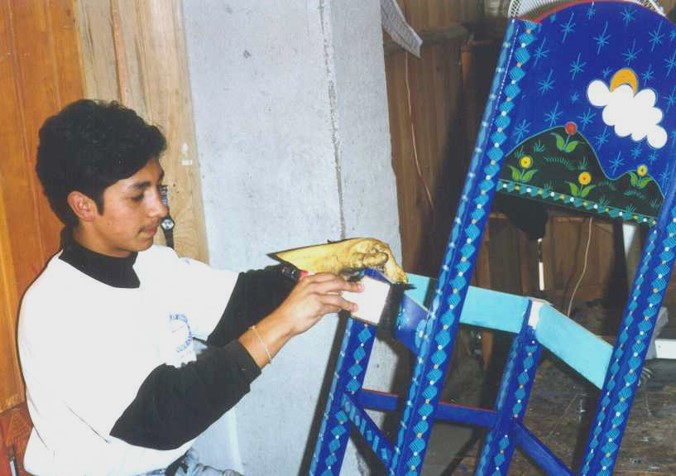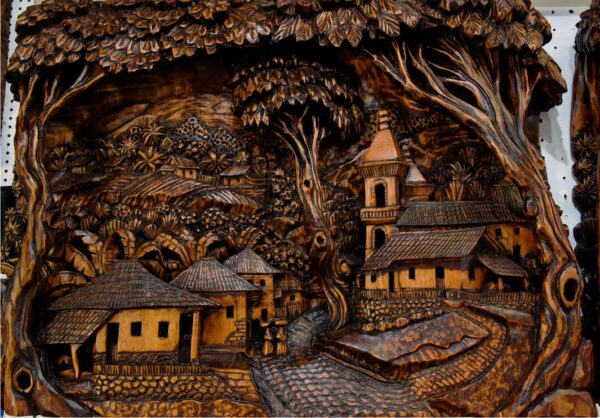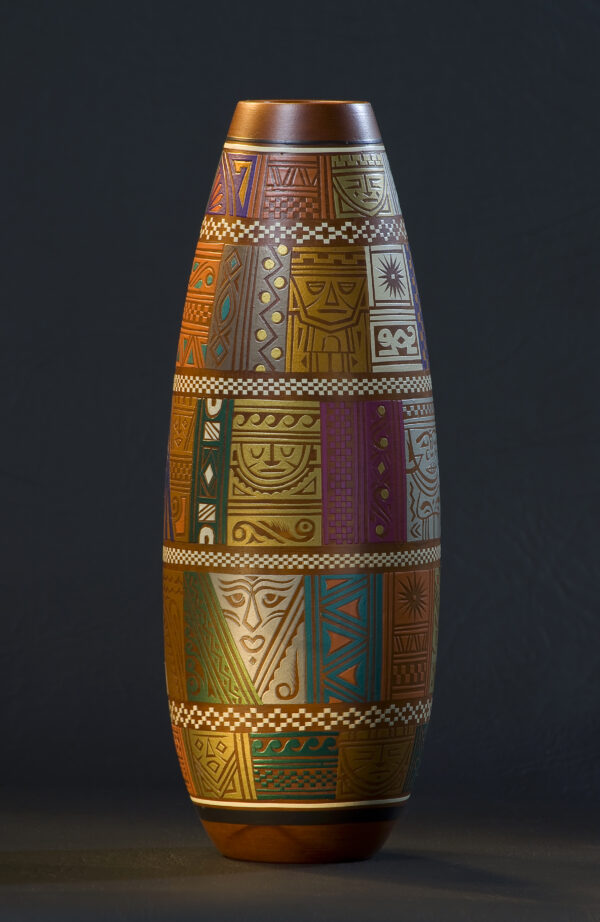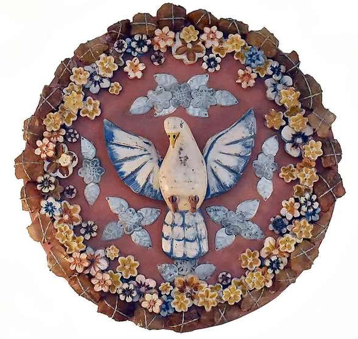Description
En Guatemala, el mueble prehispánico es algo muy diferente a lo que hoy en día se conoce como mueble. Es hasta la llegada de los españoles, que se empiezan a trabajar las sillas de madera con respaldo, los baúles, las mesas y otros artefactos de este material. Fueron los carpinteros españoles quienes empezaron a formar a sus aprendices nativos, estableciéndose así los primeros talleres de carpintería en la época de la colonia.
Por su disponibilidad, se empieza a trabajar con maderas de cedro, caoba, pino y ciprés. El mueble colonial, se trabajó con un estilo barroco, por la influencia española, en el que predominaban las curvas y figuras en espiral. Este estilo aun se conserva en las propuestas de los muebles hechos a mano que se producen en Antigua Guatemala o el municipio de Nahualá, principalmente.
Además de los muebles, los artesanos también trabajan máscaras, las cuáles en la época prehispánica eran elaboradas en piedra, barro o incluso jade. A partir de la llegada de los españoles empezaron a elaborarse en madera tallada para luego pintarlas a mano. Es entonces cuando en el país empiezan a surgir las morerías. Actualmente la mayoría de estas máscaras se hacen en pino blanco, talladas desde la troza y cada máscara regularmente está asociada a un lugar geográfico del país. Los departamentos de Quiché, Totonicapán y Alta Verapaz son los que más se han dedicado a este oficio.
Está también la imaginería, existiendo por un lado la colonial, que nace con la llegada de los españoles y todo el movimiento evangelizador, y por otro lado la interpretación de la imaginería colonial que han desarrollado los talladores indígenas en municipios como Nahualá, Chichicastenango o Totonicapán, y que hoy se encuentra disponible en el mercado local. Esta nueva imaginería artesanal es tallada y pintada a mano y desarrolla figuras religiosas, como santos, vírgenes, arcángeles y otros.
Otras propuestas artesanales desarrolladas en Guatemala bajo esta categoría son los juguetes de madera y también los instrumentos musicales como la marimba, el huehuetl o el tunkul (tambores) o la chirimía (o flauta), usados en los bailes y ceremonias indígenas.
english
Wood Carving and Furniture Carving
In Guatemala, pre-Hispanic furniture is something very different from what is known today as furniture. It was not until the arrival of the Spaniards that wooden chairs with backrests, trunks, tables and other artifacts. It was the Spanish carpenters who began to train their native apprentices, establishing the first carpentry workshops in colonial times. Due to its availability, we began to work with cedar, mahogany, pine and cypress woods. The colonial furniture was worked in a Baroque style, due to the Spanish influence, in which curves and spiral figures predominated. This style is still preserved in the handmade furniture proposals that are produced mainly in Antigua Guatemala or the municipality of Nahualá.
Besides the furniture, artisans also make masks, which in pre-Hispanic times were made of stone, clay or even jade. After the arrival of the Spaniards, they began to be made of carved wood and then painted by hand. It was then that the morería. began to emerge in the country. Currently, most of these masks are made of white pine, carved from the log and each mask is usually associated with a geographical location in the country. The departments of Quiché, Totonicapán, and Alta Verapaz are the ones that have produced the most.
There is also the imagery, on the one hand the imaginería colonial, which was born with the arrival of the Spaniards and the entire evangelization movement, and on the other hand the interpretation of the imagery that has been developed by indigenous carvers in municipalities such as Nahualá, Chichicastenango or Totonicapán, and that today is available in the local market. This new handcrafted imagery is hand-carved and painted and develops religious figures, such as saints, virgins, archangels and others.
Other handicrafts developed in Guatemala under this category are wooden toys and also musical instruments such as the marimba, the huehuetl or the tunkul (drums) or the chirimía (or flute), used in indigenous dances and ceremonies.






Reviews
There are no reviews yet.